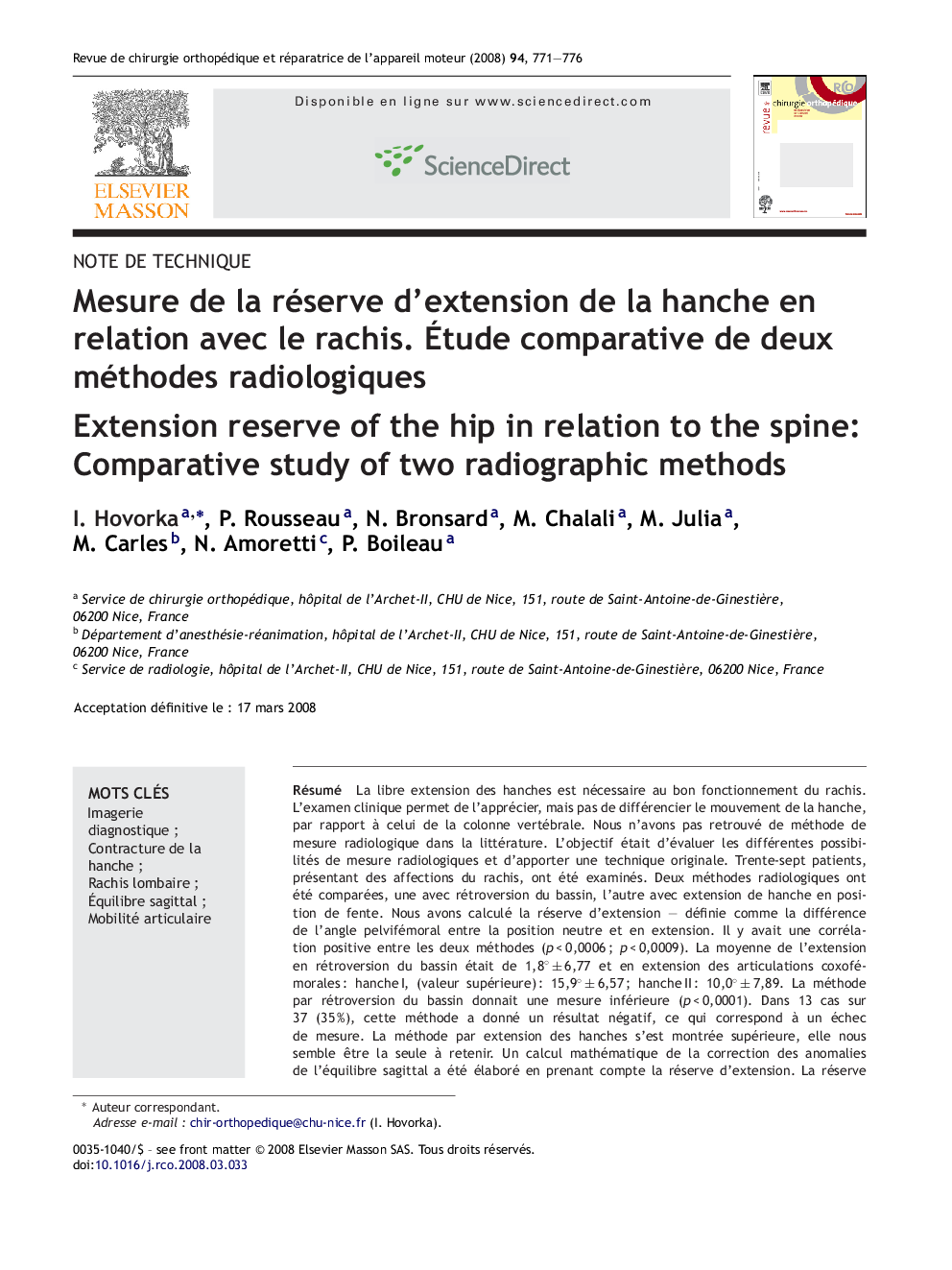| کد مقاله | کد نشریه | سال انتشار | مقاله انگلیسی | نسخه تمام متن |
|---|---|---|---|---|
| 4088158 | 1605006 | 2008 | 6 صفحه PDF | دانلود رایگان |
عنوان انگلیسی مقاله ISI
Mesure de la réserve d'extension de la hanche en relation avec le rachis. Ãtude comparative de deux méthodes radiologiques
دانلود مقاله + سفارش ترجمه
دانلود مقاله ISI انگلیسی
رایگان برای ایرانیان
کلمات کلیدی
موضوعات مرتبط
علوم پزشکی و سلامت
پزشکی و دندانپزشکی
ارتوپدی، پزشکی ورزشی و توانبخشی
پیش نمایش صفحه اول مقاله

چکیده انگلیسی
Free-hip movement is necessary for good spinal function. Limitation generally affects extension. The range of hip extension from the standing position can be considered as the hip's “extension reserve”. The amplitude of this reserve must be known because any deficit requires a pathological solicitation of the vertebral column. Measurement of the extension reserve of the hip is useful for analyzing spinal disease and for preoperative planning. Physical examination can measure extension, but cannot differentiate movement produced by the hip from that originating in the spine. We have been unable to locate any radiographic method in the literature. The purpose of this study was to evaluate radiographic measurements and to propose a novel method. The study was conducted with 37 patients with spinal disease. Two radiographic methods were compared. Four lateral views, including the lumbar spine, the pelvis and the femur were obtained in each patient: neutral position, retroversion of the pelvis and extension of each hip in lunge position. The X-rays were digitalized for computer processing. The extension reserve of the hip was calculated for each radiographic method. Extension reserve was defined as the difference in the pelvis-femoral angle between the neutral position and extension. There was a positive correlation between the two methods (p < 0.0006; p < 0.0009). Mean extension using the pelvis retroversion method was 1.8° ± 6.77; with the hip-extension method, it was hip I (side with the superior value): 15.9° ± 6.57; hip II 10.0° ± 7.89. The pelvis-retroversion method gave a lower measurement compared with the lunge position method (p < 0.0001). For 13 of 37 subjects (35%), this method gave negative values, that is, failure of the measurement method. The method of hip extension in lunge position was superior to the pelvis-retroversion method, which gave lower measurements that were often incoherent and unable to provide specific information for each hip. The method using the lunge position for hip extension appears to be preferable. We are currently conducting a clinical trial to include extension reserve in the analysis of sagittal balance and for determining curvature corrections. We propose a mathematical formula using extension reserve for determining sagittal correction. Radiographic determination of extension reserve of the hip joint is of major importance for assessing spinal disease in addition to its contribution to the analysis of hip and pelvic disease. The methods presented here enable radiographic measurement of the extension reserve of the hip.
ناشر
Database: Elsevier - ScienceDirect (ساینس دایرکت)
Journal: Revue de Chirurgie Orthopédique et Réparatrice de l'Appareil Moteur - Volume 94, Issue 8, December 2008, Pages 771-776
Journal: Revue de Chirurgie Orthopédique et Réparatrice de l'Appareil Moteur - Volume 94, Issue 8, December 2008, Pages 771-776
نویسندگان
I. Hovorka, P. Rousseau, N. Bronsard, M. Chalali, M. Julia, M. Carles, N. Amoretti, P. Boileau,